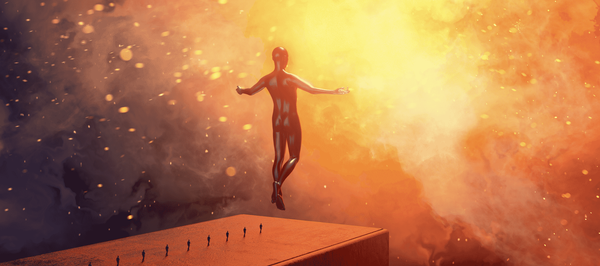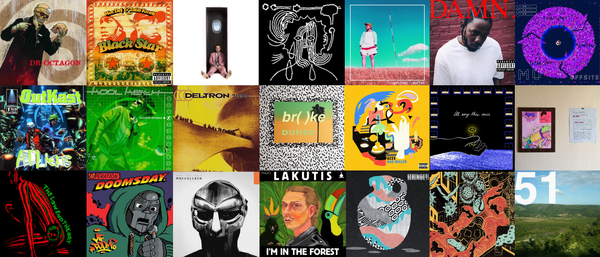Colton Swabb • • 6 min read
How To Be a Successful Artist: 6 Simple Yet Brilliant Insights From Author Neil Gaiman
Art, Poetry & Writing Psychology & Happiness Self Improvement

The best advice that author Neil Gaiman ever received was from one of his idols: Stephen King. In response to the success of Neil’s Sandman comics, Stephen King told him, “This is great. You should enjoy it.”
But he didn’t.
It was the best advice that he ever got, which he ignored.
Instead, he worried.
Worried about the next deadline, the next idea, the next story.
And there was not a moment for the next 15 years that Neil stopped and enjoyed the ride.
But in his commencement speech at the University of Arts in 2012, Neil shared his regret about this as well as the most important lessons he wished he knew starting out as a writer and a freelancer.
Hopefully, these 6 lessons will help you let go and enjoy the ride wherever you’re at in the creative journey.
Lesson #1: You Don’t Need to Go to School to Create Good Art
The idea of four years of enforced learning is enticing to no one; especially to creators who know that the more you create, the better you get.
You become a better writer the more you write. And the more you write, the quicker you realize that no one minds that you’re just making it up as you go along.
They don’t know you don’t have a plan. They don’t know that you don’t know the rules of what can or can’t be done. In Neil Gaiman’s own words:
When you start out on a career in the arts, you have no idea what you’re doing. This is great. People who know what they’re doing know the rules and they know what is possible and what is impossible. You do not. And you should not. The rules on what is possible and impossible in the arts were made by people who had not tested the bounds of the possible by going beyond them. And you can.
He continues:
If you don’t know it’s impossible — it’s easier to do. And because nobody’s done it before, they haven’t made up rules to stop anyone from doing that particular thing again.
Lesson #2: Know Where Your Mountain Is
As a creative, you have to balance your goals and hopes with feeding yourself, paying debt, and finding work. It’s a brutal and harsh reality that freelancers know all too well.
So, how do you know when you are straying too far from your goal or moving towards it, while juggling multiple deadlines and priorities?
Something that worked for me was imagining where I wanted to be […] and imagining that it was a mountain. A distant mountain. My goal. And I knew that as long as I kept walking towards the mountain, I’d be alright.
Ask yourself if something is bringing you towards your mountain or moving you away from it. And use this to know whether to say yes to an opportunity, or no because it will move you away from your mountain.
Lesson #3: Learn How To Deal With Failure
As you try to reach your mountain, you will no doubt experience failure, which is why you must learn how to deal with it.
Not every project will survive. So in order for you to survive too, you need to be thick-skinned.
A freelance life, a life in the arts, is sometimes like putting messages in bottles on a desert island and hoping that someone will find one of your bottles and open it and read it and put something in a bottle that will wash its way back to you. Appreciation. Or a commission. Or money. Or love. And you have to accept that you may put out hundreds of things for every bottle that winds up coming back.
Neil’s first book should have been a bestseller, but it wasn’t due to the publisher going into involuntarily liquidation after the first print sold out. He wrote for the money and never received it.
Luckily, this didn’t stop him from continuing to write, and he learned to never again write for the money. His logic:
If I didn’t get the money, then I didn’t have anything. And if I did work that I was proud of and I didn’t get the money, at least I’d have the work.
When you write for the sake of making good art, you will always have the satisfaction of creating something you can be proud of.
Besides, what would be the fun in making something you knew was going to work?
Lesson #4: Learn How to Deal with the Problems of Success
No one talks about the problems of success, because no one who makes it to the other side wants to be found out…
The first problem of any kind of even limited success is the unshakable conviction that you are getting away with something and that any moment now they will discover you.
This is what Neil Gaiman calls “Imposter Syndrome:”
I was convinced that there would be a knock on the door and a man with a clipboard would be there to tell me that it was all over and they caught up with me and now I’d have to go and get a real job. One that didn’t consist of making things up and writing them down […] and then I would go away quietly.
The problems of success are real. And with luck, you will experience them. But success means nothing if you can’t do the things you really want to do.
The biggest problem of success is that the world conspires to stop you doing the thing you do because you’re successful. There was a day when I looked up and realized that I had become someone who professionally replied to email, and who wrote as a hobby.
Which is why, when you send bottles into the ocean each day, you will inevitably get messages back and you will have to learn how to say no to anything that pulls you away from your mountain.
Lesson #5: Make Mistakes and Make Good Art
When you create every day, you will make mistakes. And mistakes can be useful.
They will fuel your art.
Whatever discipline you’re in […] you have one thing that’s unique: you have the ability to make art. And for me, and for so many of the people that I’ve known, that’s been a lifesaver. The ultimate lifesaver. It gets you through the good times and the other ones.
Life can go wrong and it often does. When it does all you can do is make good art.
Someone on the internet thinks what you’re doing is stupid or evil or it’s all been done before? Make good art. Probably things will work out somehow and eventually time will take the sting away. And that doesn’t even matter. Do what only you can do best: make good art. Make it on the bad days. And make it on the good days, too.”
Lesson #6: Make YOUR Art
Neil says that the instinct most creatives have when they’re starting out is to copy others, but that’s not a bad thing. According to him, most artists find their own voices only after they’ve sounded like a lot of other people.
The one thing you have that nobody else has is YOU. Your voice. Your mind. Your story. Your vision. So write and draw and build and play and dance and live as only you can.
And, in a way only he can, Neil offered this powerful bit of advice that shook me to my core:
The moment that you feel that, just possibly, you’re walking down the street naked… exposing too much of you heart and your mind and what exists on the inside… showing too much of yourself … that’s the moment you may be starting to get it right.
BONUS: Neil Gaiman’s Secret Freelancer Knowledge
This may be the best advice for freelancers I’ve ever heard, and it’s directly from Neil’s mouth:
People keep working in freelance work — and more and more of today’s work is freelance — because their work is good, and because they’re easy to get along with, and because they deliver the work on time.
And you don’t even need all three. Two out of three is fine.
People will tolerate how unpleasant you are if your work is good and you deliver it on time. People will forgive the lateness of your work if you’re good and they like you. And you don’t have to be as good as everyone else if you’re on time and it’s always a pleasure to hear from you.
Use these lessons to remind yourself of where on your creative journey you are. Become present. And enjoy the ride while you can.
Watch Neil Gaiman’s commencement speech in its entirety here.










